If you are a regular or if you have landed on Tarantula: Authors and Art for the very first time, get ready to enjoy making some art! Our contributor, Karen Grace, an art teacher and historian, will take you through a guided painting activity - we hope you’ll give it a try. If a friend forwarded you this article, welcome; if you like it, share it or why not subscribe?
Like it or not, we all have some little demons lurking around the shadowy corners of our minds ...the Coulda-Shoulda-Wouldas, the Taunts, the Temptations... perhaps you too have a greatest hits list of recurring troublemakers? Whether you think of them as those little devils on your shoulder from a Bugs Bunny cartoon or as stranger things that go bump in the night, we’ve all got them.
There are many ways to deal with our demons. One very popular approach is to try to ignore them and hope they’ll just go away. I suppose this may briefly work on some level but usually the end result is that the little devils just keep trying to get your attention and get bigger and more insistent. Read The Tell Tale Heart by Edgar Allen Poe if you need an example! (Spoiler alert: it doesn’t go well.)
The other choice is to confront those pesky demons and deal with them head on. Buddha took this approach when confronted with his nemesis Mara, known as the Lord of Delusion. Buddha chose to invite Mara in for tea and instructed the monks with him to set the table with his best dishes and welcome Mara in as an important guest. The monks were confused and fearful of this plan and understandably wanted to run or fight but Buddha wanted to understand the demon. In other words, get to know your demons so you can understand both them and yourself a little better.

The confrontational approach has been fertile ground for artists since the beginning of art. Last month I wrote to you about Ukrainian artist Maria Prymachenko and among her sunshine and wildflowers lurked some rather impressive beasts – like in her works May That Nuclear War Be Cursed and A Dragon Descends on Ukraine. In the work of this month’s artist, Sandra Vasquez de la Horra, I sense some of the same impulses at work: to get out onto paper that which haunts us within. Or in more scientific terms, like an entomologist pinning down insects for further study.

As these artists show us, a good way to get to know your demons is to paint them. This activity is a bit like a participatory Rorschach test – instead of looking at prepared ink blots, here you put brush to paper and bring them forth yourself!
I first encountered this activity via the teacher, comic artist, and MacArthur Genius Grant recipient Lynda Barry in her book One! Hundred! Demons! As described in the book, Barry read about a Zen monk named Hakuin Ekaku from 16th century Japan and his painted scroll of a hundred demons.
Barry adapted this concept to her own artistic practice – using Sumi ink and Japanese brushes on yellow legal paper to bring out the demons of her troubled youth and reckon with them. Keep reading, and let’s give it a try.
To get started I used some graph paper from the back of an old notebook, some black watercolor paint, and a round brush (size 8). A little dish of water is necessary as well. The materials should be simple and easy – not something so precious you’re worried about messing up. (Ah, The Perfectionists, another group on the demon’s greatest hits list.)
Warm up your head and your hand by starting with a spiral or two. You can work from the center out or from the outside in. Or, try both and see which works best for you. Slow down your breath as you go round and round and really pay attention to the spaces between one circle and the next. Allow your brain to focus in on those circles between circles and let everything else fall away.
Then just let your brush move about the paper and see what comes to life. Go slowly at first. Paint a little blob or a line and see what it looks like to you, then keep going. It’s a little like finding shapes in the clouds.
It can be fun to squeeze several in around each other and see what the available space encourages you to paint. And perhaps having some company will help those demons come out to play!
Taking a shape you’ve made and deciding where to put eyes, nose, or mouth can help bring clarity to a critter.
What are these little monsters and what do they mean? I was amazed at the way some managed to jostle old memories loose or offer the echo of an emotion. For me it was a little like the way specific smells can trigger memories – a way of bypassing the language center of the brain and getting at thoughts and feelings that are hard to put into words. This funny little tangle of lines surprised me when it took me straight back to an activity in kindergarten when I felt confused and powerless.
I’ll warn you, start painting your demons and little bit of joyful chaos will follow! Now their funny little painted faces and feet are running all over my dining room table and spreading to the chairs and the floor. I have set them loose and they refuse to be contained - it’s kind of hard to stop making more!
And now I must invite them all to tea.
Tarantula: Authors and Art is a reader-supported publication. To receive new posts and support our work, consider becoming a free or paid subscriber.




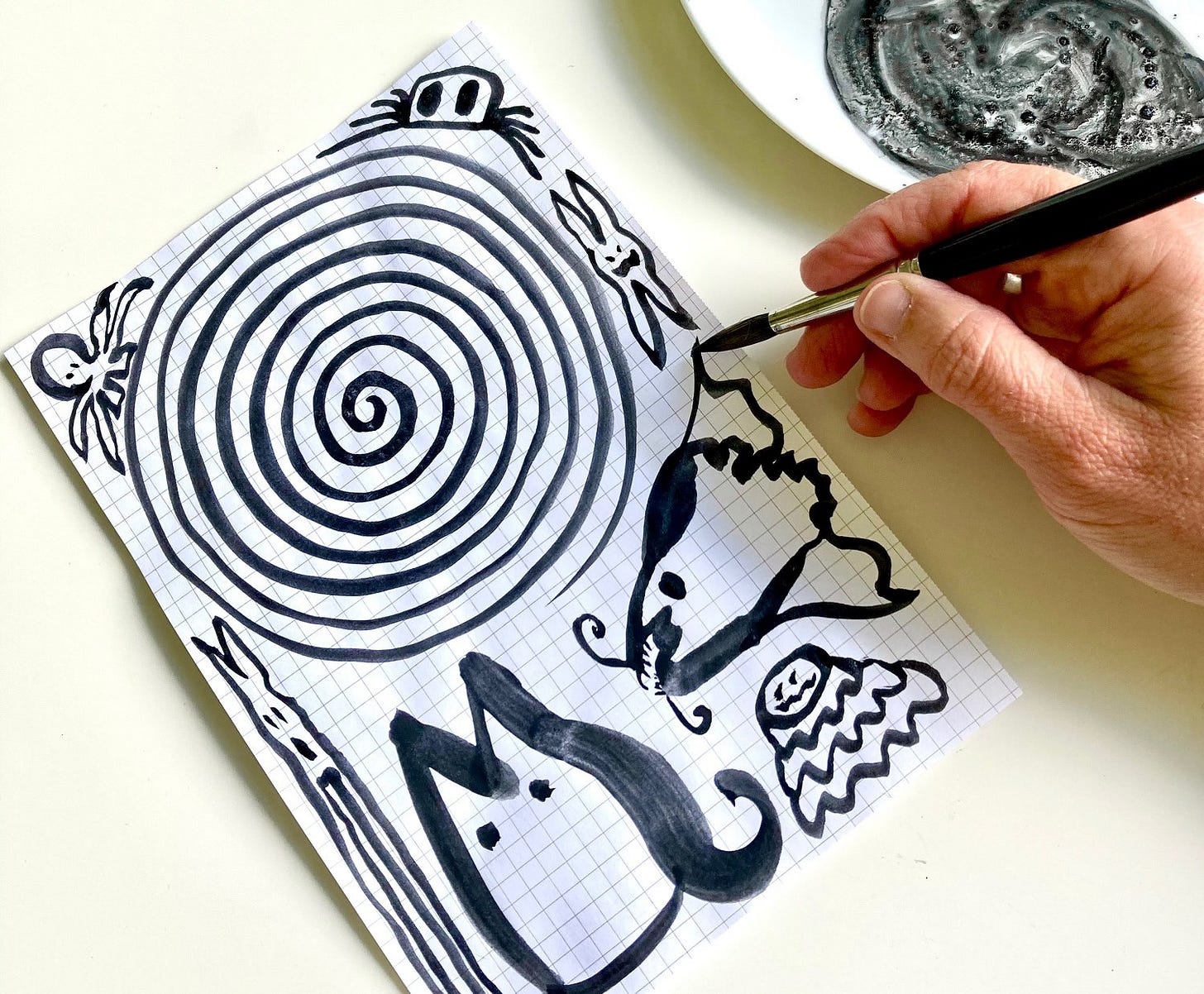
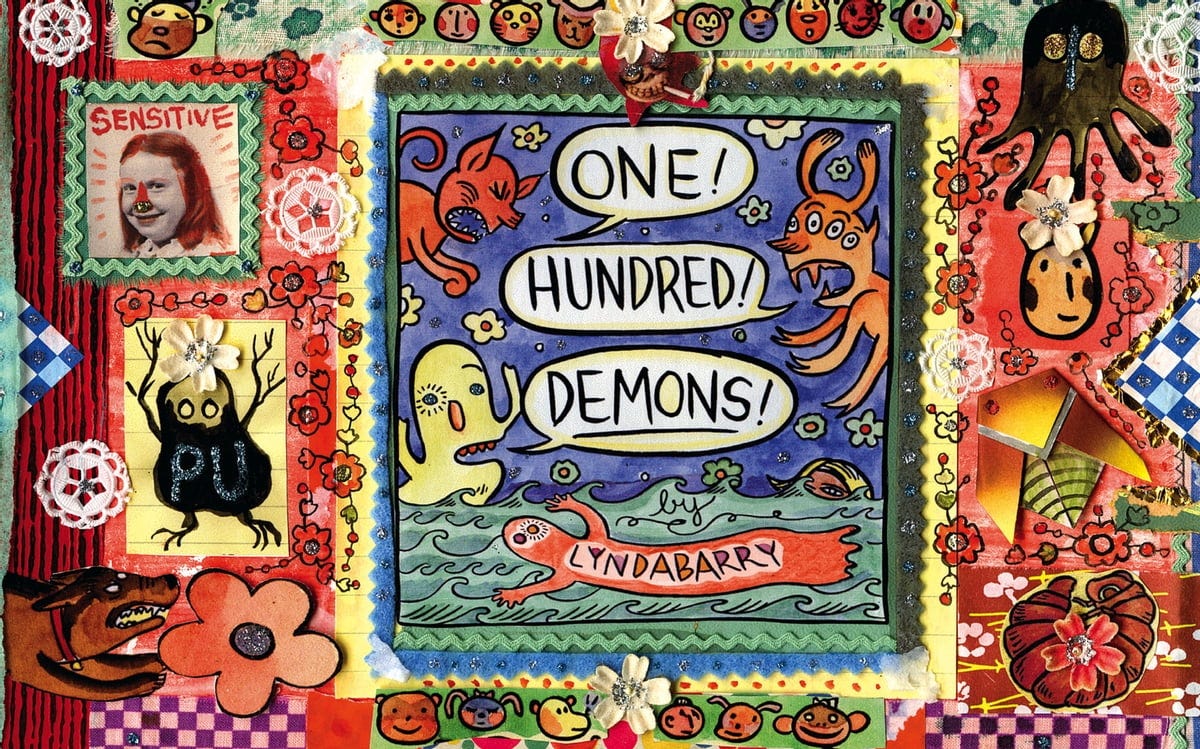
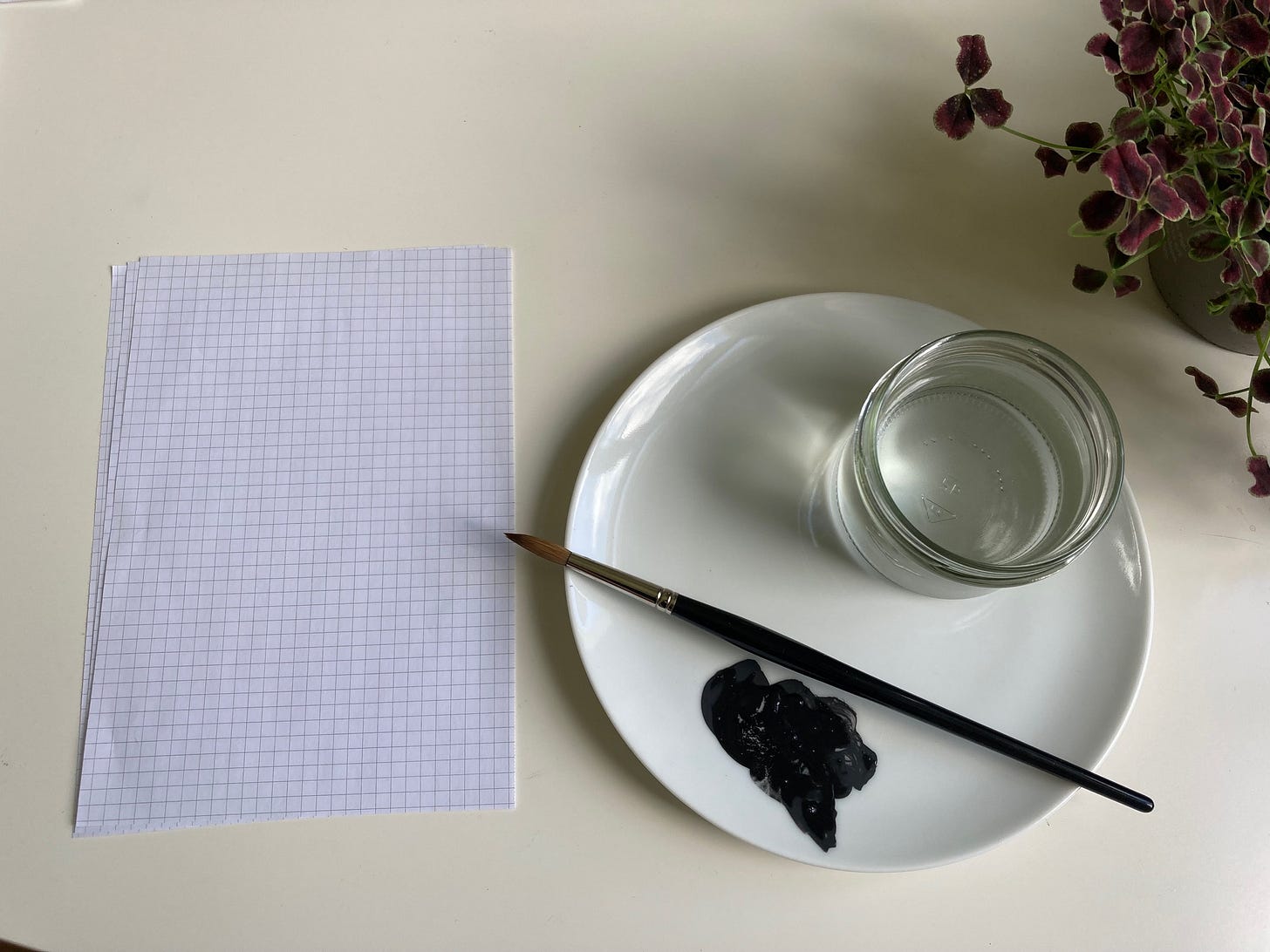
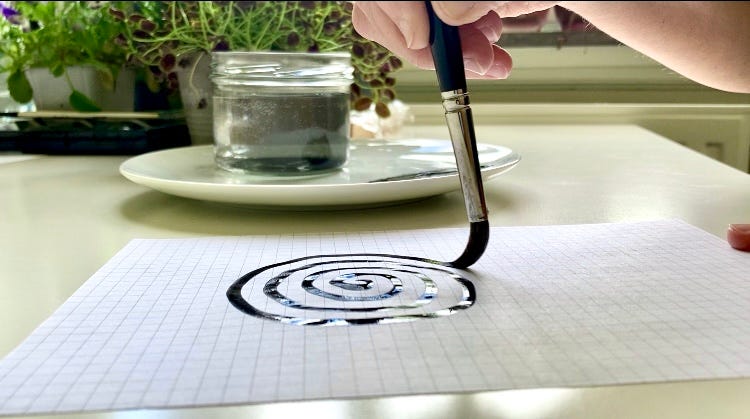
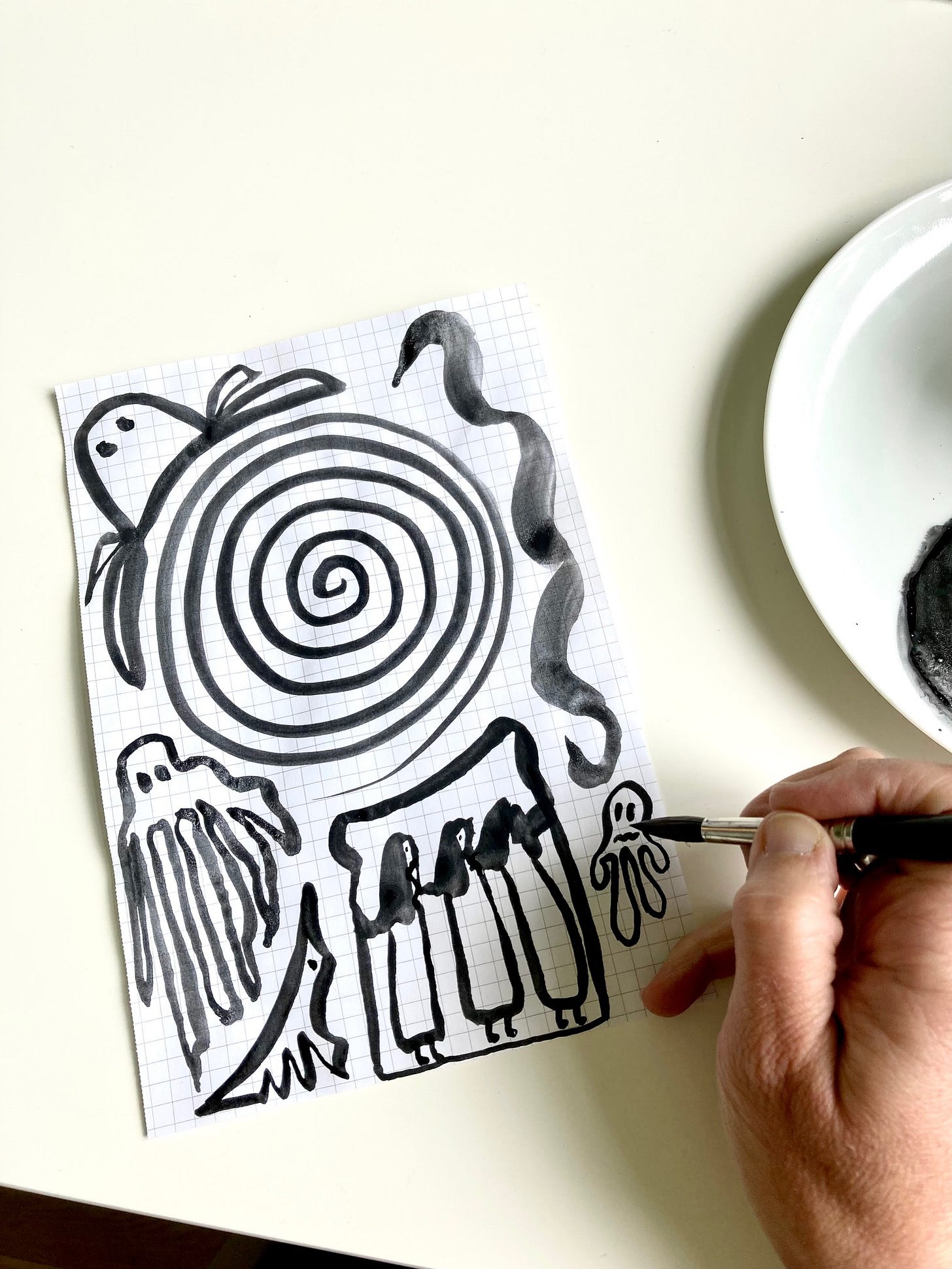

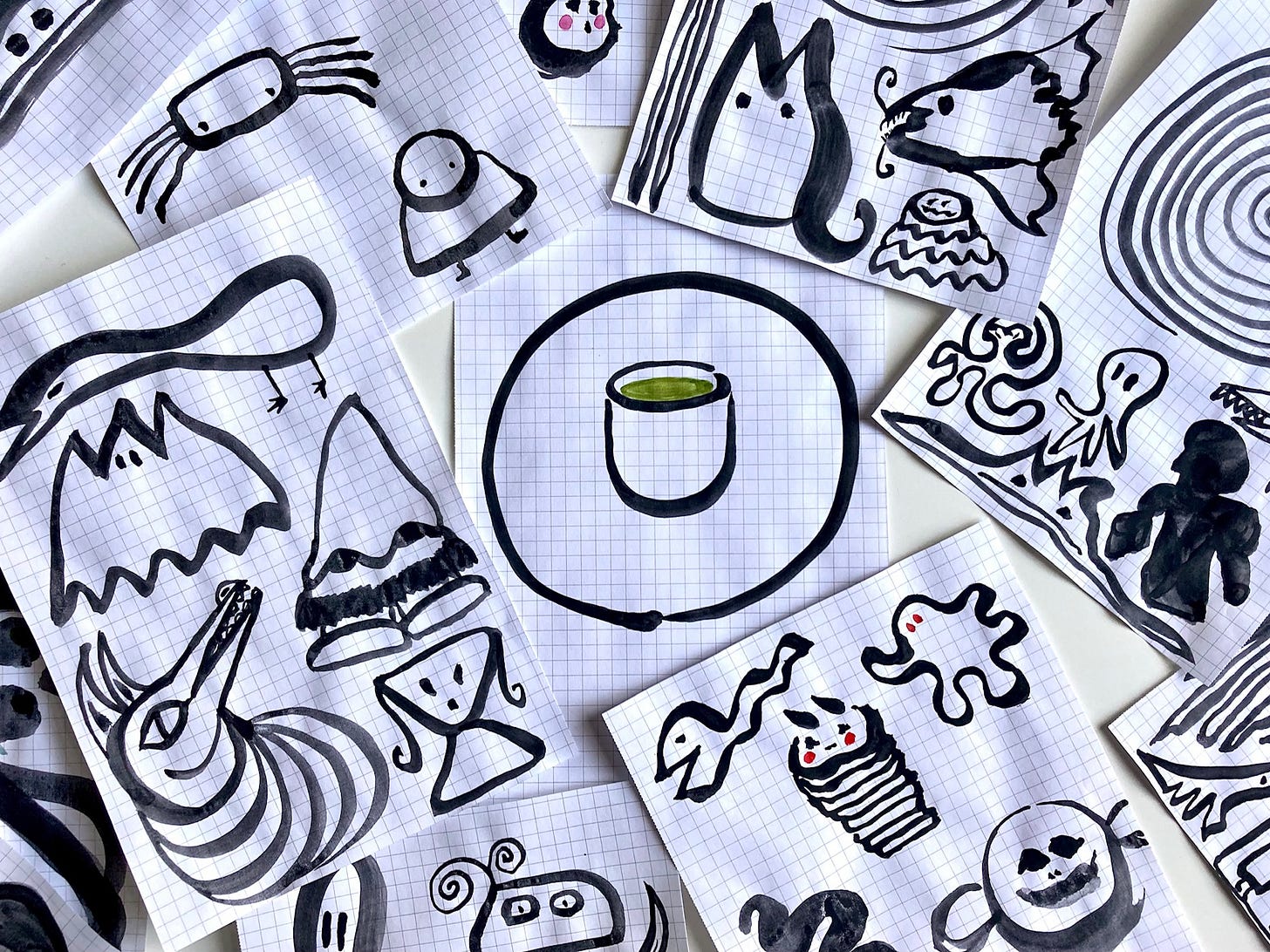
Brilliant, Karen! I want to come to that tea party!